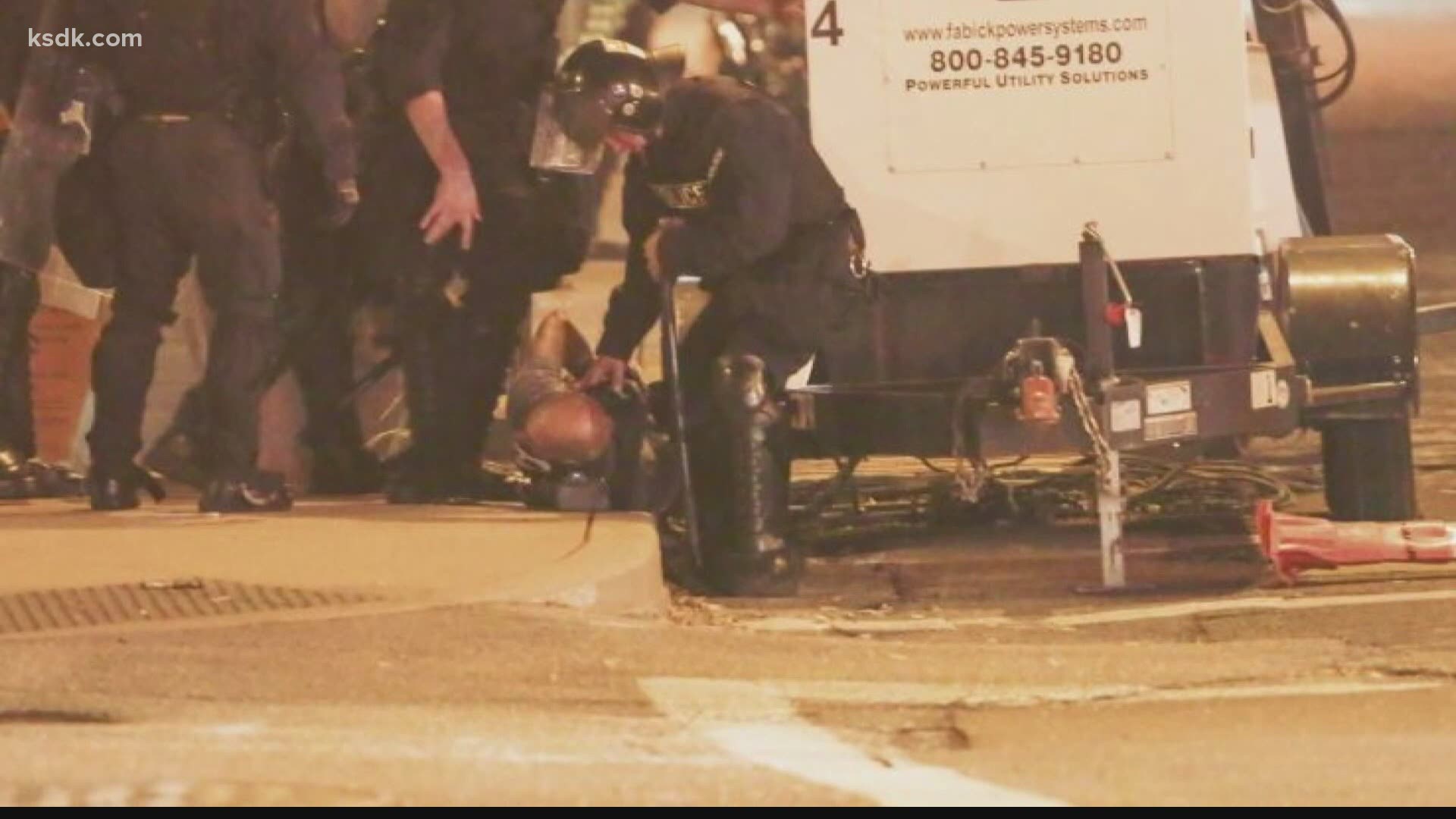ST. LOUIS — The moment everyone had been waiting for during the two-week trial involving police officers accused of assaulting one of their own had finally arrived.
“You can bring the jury in,” District Judge Catherine Perry told the Marshals guarding her courtroom inside the federal courthouse in downtown St. Louis.
After 13 ½ hours, the federal jury deciding the fate of two former officers and one current St. Louis police officer accused of assaulting officer Luther Hall as he worked undercover during 2017 protests had reached its decision.
But they did so during a pandemic.
That means reporters, and the public, had to watch the proceedings as they were streamed live into several televisions inside an overflow courtroom 13 floors above the real action in order to keep a safe social distance.
For weeks, the stream was spotty, seemingly at some of the most key moments – including the moment where former officer Dustin Boone invoked his Fifth Amendment right. When First Assistant U.S. Attorney Catherine Costantin was questioning witnesses and making some of her key points.
Those of us who were in there sighed and scoffed every time it went silent, glitched or just all together stopped working.
I documented every outage during my live tweets, which attracted the attention of hundreds of new followers.
Clearly, the public was interested in knowing how this trial was going to turn out.
How three white police officers accused of assaulting a Black colleague working undercover would, or would not, be held accountable.
How a predominantly white jury selected from predominantly rural white counties would judge them in a case prosecutors argued included a racial component.
And – how defense attorneys could possibly explain their client’s actions and texts.
Surely everything would run smoothly for the biggest moment of the trial.
Nope.
Instead, Perry’s instruction to the Marshals to bring the jury in to read their verdict was the only thing those of us gathered inside the packed overflow courtroom heard.
And it was a sizeable crowd. Attorneys from the U.S. Attorney’s Office where there including the Interim U.S. Attorney. An Internal Affairs investigator for the St. Louis Metropolitan Police Department was there. Along with reporters. Civil attorneys representing protesters. Friends and family members of the victim and the defendants.
And there were more than sighs and scoffs when the screen turned into a logo of some sort at the moment the verdict was to be read.
I said, “This is unbelievable” out loud, to which Attorney Javad Khazaeli said, “And yet it is.”
Only two members of the media were able to be inside the actual courtroom, where Perry doesn’t allow us to use our phones or report anything live.
Marshals tried their best to alert the technology staff at the courthouse. I complained to the presiding judge.
But in the end, the only other thing we heard was Perry saying, “Thank you for your service, you’re free to go and the other officers are free to go on bond.”
Of course, we all managed to get the verdict, which included acquittals and mistrials.
But we didn’t get to hear them as they were delivered. We didn’t get to see what body language we could make out from the screens. We didn’t get to hear whether there was any emotion.
You get the picture.
Meanwhile, another high profile trial is taking place in Minneapolis right now. The police officer accused of killing George Floyd is on trial.
They have an overflow courtroom, too.
But, in that trial, apparently the judge is being kept informed of any glitches in the overflow courtroom – as it is being treated as if it were part of the front-row.
The judge actually postponed the trial until the next day earlier this week when the feed went out.
My former colleague and fellow overflow courtroom watcher St. Louis Post-Dispatch Reporter Robert Patrick brought that to my attention.
We both smiled.
And sighed.
At least the public won’t be missing a beat in that trial.

